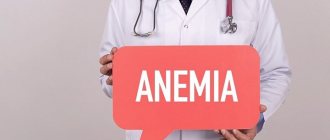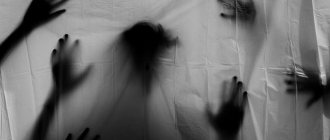Taking many psychoactive drugs is accompanied by the occurrence of visual or auditory hallucinations. This is a very dangerous condition in which a person completely falls out of reality. He may experience euphoria, delight, or, conversely, uncontrollable fear. In any case, it is very important to provide timely assistance to a drug addict with hallucinations. If you don't do this, the person's condition will worsen, paranoia will increase, and it is impossible to predict how this will end.
Highly qualified specialists are able to bring the patient out of the illusory world and return him to the real one. You will find them in our “Center for Healthy Youth”. Experienced doctors who know how to deal with various types of addictions work here. Specialists provide voluntary and compulsory drug addiction treatment, they help patients fight addiction to acid, 2-CB, DOB, spice, etc. When turning to a rehabilitation center, a person taking psychoactive substances can count on a professional approach and a helpful attitude.
Kinds
- True. The patient sees, feels or hears something, but this phenomenon is bright, living in nature. The hallucination is real for the sufferer.
- Pseudohallucinations. These are visions, sounds or sensations that occur outside of objective reality.
Important: false hallucinations usually depend on suggestion or the influence of external factors.
Hallucinations vary depending on the specific sense organs that perceive:
- Visual. These can be entire storylines, mystical visions, just flashes of light or smoke. And also animals, identical objects, vision of organs in one’s body or foreign objects, etc.
- Auditory. These include ordinary noises or sounds, as well as verbal ones: imperative, when a certain voice orders the patient to do something, usually it is negative; commenting - voices discuss the patient’s thoughts, feelings and sensations, they are also negative and judgmental; contrasting, when the patient hears 2 voices directed against each other, one condemns the patient, the other defends, but at the same time they give conflicting commands to the sufferer; speech motor - it seems to the patient that certain forces are speaking for him, in an unknown language.
- Olfactory. The patient complains of unpleasant odors.
- Flavoring. The patient may experience unpleasant tastes in the mouth.
- Tactile: sensation of liquid, different temperatures, insects crawling, hugging.
- Functional. Against the background of any objects or phenomena, imaginary images, sounds, etc. appear.
- Hallucinations of Bonnet. The imaginary sensation is perceived by the analyzer that has completely or partially lost its function.
- Hemianoptic. Occurs due to a disease called hemianopsia. This is when the patient sees only half of the field of vision. Imaginary sensations arise in the area that does not see.
- Hypnagogic and hypnopompic hallucinations. They can occur even in a healthy person. They appear in the form of imaginary images or sounds that accompany a person when waking up or falling asleep. They are connected with the events of the day experienced.
Types of hallucinations depending on the analyzer:
- Psychomotor, when the patient feels that part of his body is in motion.
- Reflex, when, with a real impact on one analyzer, another is excited.
- Ecstatic. Vivid pictures or entire images appear in a state of altered consciousness.
Important: hallucinations must be distinguished from mirages and illusions, because they arise based on other factors.
Classification
Hallucinations can be true or false. In the first case, non-existent sounds, visual images, etc. look as reliable as really existing objects of the surrounding world, and are felt as perceived by the senses. Pseudohallucinations are characterized by some subjectivity; they occur in an imaginary conditional space and often lack a clear structure. The following types of true senile hallucinations are distinguished:
- Spontaneous. They develop on their own, without additional stimulation.
- Reflex. They resemble synesthesia, that is, conditions in which irritation of one sense organ causes signals from another. For example, when listening to music, visual images appear.
- Functional. They are provoked by real sensory stimuli, but acquire non-existent content. For example, the patient hears a human voice in the rustling of leaves or the sounds of flowing water.
Causes
Misleading images, sounds, or sensations may occur when:
- Dementia. It seems to the patient that objects are moving.
- Parkinson's disease. Visual images appear: people, animals, objects, or even entire situations.
- Migraine. Patients see flickering or colored zigzag lines in the central region of the visual field. They leave behind a white spot that disappears after half an hour.
- Epilepsy. Visual images, in the form of bright spots or outlines.
- Sleep disturbance. Usually occur when waking up or falling asleep.
- Brain stem infarction. Bright and colorful scenes appear. They usually carry a semantic load. They can last from 1 minute to several hours.
- A brain tumor. Hallucinations can be of different types. This depends on the localization of the pathological process.
- Creutzfeldt-Jakob disease. It occurs due to prion infection and causes dystrophic processes in the cerebral and spinal cord, basal ganglia. Visual hallucinations occur: color changes, perception in reduced sizes, distortion of object characteristics, etc.
- Sclerosis of cerebral vessels. Auditory and visual hallucinations appear.
- Stroke.
In addition to the reasons described above, the culprits of hallucinations may be: Aging.
- Infectious diseases.
- Pathologies of internal organs.
- Intoxication with medications.
- Poisoning with toxic substances.
Which doctor should I contact?
Hallucination is not a separate disease, but a symptom that occurs when a particular organ is damaged, in most cases the brain. But in order to identify the real cause of the pathology, you need to consult the following specialists:
- Psychiatrist.
- Neurologist.
- Oncologist.
- Expert in narcology.
- Infectious disease specialist.
Hallucinations are an important symptom that indicates that the patient has certain disturbances in awareness of the surrounding reality. Patients are often embarrassed or afraid to talk about the presence of hallucinations, because they think that only people with mental disorders experience hallucinatory experiences.
IMPORTANT! This is a false, persistent belief; different specialists need to work with hallucinations. The fact is that hallucinations can occur due to the presence of a neoplasm or infectious pathology.
Therefore, make an appointment with a specialist from our center - a psychiatrist, neurologist, oncologist, narcologist or infectious disease specialist to find the root of the problem and eliminate the symptom!
Sign up
Frequently asked questions (FAQ)
How long do hypnopompic hallucinations last? For most people, hypnopompic hallucinations are extremely brief. They can last anywhere from a split second to seconds or from seconds to a couple of minutes. Those who take psychoactive or brain-altering substances may experience hallucinations that last much longer.
Do hypnopompic hallucinations matter? They usually have no hidden meaning. Think of them as strange sensory experiences resulting from altered or abnormal brain activity.
Are hypnopompic hallucinations good or bad? From an objective point of view, they should be considered neutral in the sense that they are nothing more than strange sensory experiences due to changes in brain activity. Moreover, if they evoke feelings of fear, they may be subjectively perceived as “bad,” whereas if they are pleasant, they may be perceived as “good.”
Treatment methods
Treatment methods for pathology depend on the causes that caused it. There is no single scheme. For example, in case of poisoning with toxic substances, you need to stop their effect on the body. If there are neurological causes, it is necessary to begin appropriate therapy or stop the acute form of the disease.
Treatment is usually carried out with:
- Neuroleptics.
- Antidepressants.
- Means to improve blood circulation in the brain.
- Antiparkinsonian drugs.
Drug addiction
In ordinary life, therapeutic agents are used to restore one or another lost function of the body. At the same time, drug addicts purchase goods from pharmacies to obtain euphoria.
Opioids
A group of medications most often used among drug addicts. In therapeutic practice, medicines have an analgesic and relaxing effect and are used for serious illnesses. These drugs can quickly cause a narcotic effect, since the substances have a direct effect on the central nervous system.
Common medications include:
- Morphine;
- Fentantyl;
- Promedol;
- Codeine;
- Tramadol.
It is quite difficult to obtain such drugs, since they are sold under strict reporting conditions and only with a prescription. However, even strict control of drugs does not solve the problem of their use.
"Lyrics"
Another popular drug among drug addicts is pregabalin, the active ingredient in Lyrica. The main effect of pregabalin is associated with inhibition of brain receptors and inhibition of epileptic seizures. In the absence of control over the substance consumed, drug addiction occurs, which can only be solved with the help of experienced narcologists.
Antitussives
Among these drugs, substances containing dextromethorphan are dangerous; they are used in therapy to treat dry cough. Increasing the dose of the active substance during drug treatment leads to a narcotic effect, which is actively used by “newbies”. Among the main symptoms of drug addiction when using such substances are relaxation, changes in perception and loss of concentration, and hallucinations. Loss of self-control leads to serious consequences, including suicide.
N-anticholinergics
The therapeutic effect of drugs in this group is due to the ability to act on brain receptors responsible for irritation and tremor of the limbs. The main indication for the use of these drugs is Parkinson's disease. With the constant use of such substances, addiction occurs. It has been proven that even a slight increase in the dose of the active substance causes intoxication. The main manifestations of drug addiction are psychomotor agitation, hallucinogenic effects, delusional disorders and symptoms of loss of orientation in space.
With regular use of the substance as a drug, side effects occur:
- inability to perform usual activities;
- mental disorders;
- cardiopalmus;
- the appearance of pain behind the sternum;
- panic attacks;
- rash on the body;
- nausea and vomiting.
With chronic medication use, mental disorders develop - hallucinations, short temper and irritability, loss of intellectual functions.
Analeptics
Such narcotic substances include sulfocamphorcaine, which is used in therapeutic practice to eliminate acute symptoms of heart failure, low blood pressure and collapse. It has been proven that analeptics are quickly addictive, so they are often used by drug addicts as an additional relaxing substance. After consuming an analeptic dose many times higher than the normal dose, a person begins to experience sudden bursts of strength and increased motor and mental activity. At the same time, there is a sharp increase in blood pressure and tachycardia, which can lead to the development of heart pathologies.
Nootropics
In therapy, nootropics are necessary to improve brain activity, restore metabolic processes in cells and maintain head vessels in normal tone. Proper intake of substances relieves tension, restores mental and physical abilities, and improves concentration and memory. Typically, nootropics are used in clients after a stroke, concussion, or in old age. To obtain a narcotic effect, large doses of nootropics are mixed with alcohol or other drugs, after which a long-lasting effect of relaxation and euphoria occurs. Constant use of the drug is fraught with the development of liver damage and hypertension.
Antiviral drug Remantadine
Drug addicts, in pursuit of a high, use Remantadine as an active substance. The drug was sold in pharmacies for a long time without special prescriptions. It has been proven that when the dosage of the drug is increased by 10-15 times, a person experiences symptoms of drug intoxication. Impaired spatial thinking, perception and memory loss, a feeling of rejection from one’s own body are symptoms that force drug addicts to repeat taking Remantadine many times. As a rule, an overdose of the drug occurs quite quickly, and is manifested by symptoms of intoxication, cramps and abdominal pain.
Drugs containing codeine
Codeine-containing drugs have been and are actively used in therapy as an effective antitussive agent. However, today medicines cannot be bought without a special prescription from a doctor. This is due to the composition from which drugs can be manufactured. Among them, “Crocodile” is popular. Dependence on these drugs is difficult to treat.
Muscle relaxants
One of the muscle relaxants used for narcotic purposes is Baklosan, which is necessary for solving neurological and therapeutic problems.
Exceeding the dose of Baklosan leads to the development of the following symptoms:
- feeling of relaxation in the body;
- increased mood;
- hypertension;
- tachycardia;
- hallucinations;
- delirium;
- nausea, vomiting;
- eliminating feelings of fear.
An increase in the effect of the muscle relaxant occurs when Baklosan is mixed with alcohol or amphetamines.
Antidepressants
A large number of young people use this particular group of drugs. This spread is due to the fact that even ordinary doses of drugs can lead to the desired effect - elevating mood, relaxation and eliminating anxiety. Due to the action of antidepressants, apathy, lethargy and loss of appetite develop, a person ceases to experience fear, blood pressure rises, and tachycardia occurs. When these drugs are combined with other CNS stimulants, overdose and death can occur in the addict.
Tranquilizers
Medicines with pronounced psychomotor effects. In therapeutic practice, tranquilizers are used in psychiatry and narcology to relieve anxiety and excessive activity of the client. Abuse of tranquilizers causes rapid development of addiction. An overdose of drugs in this group can lead to a person falling into a coma, disruption of the brain, liver, and death of the drug addict.
Antihistamines and non-narcotic analgesics
Medicines that are easy to obtain without a special prescription from a doctor. Increased doses of drugs such as Diphenhydramine, Amidopyrine, Phenacytin and Pipolfen can cause increased emotional background, elevated mood, as well as relaxation and loss of control over behavior. Side effects from taking such drugs include insomnia, headaches, hypertension and seizures.
"Tropicamide"
A substance used in therapy to treat eye pathologies. As a narcotic drug, the drug is administered intravenously, after which an immediate effect occurs. Side effects such as convulsions, loss of vision, heart pathologies and impaired consciousness do not keep you waiting.
Lifestyle during hallucinations
The patient’s further life depends on the reasons that caused the pathology. If there is a disease that cannot be treated, then you need to constantly maintain normal functioning with the help of medications. If hallucinations were caused by certain diseases, then after getting rid of them you need to engage in further prevention.
Important: you should also give up bad habits, lead a healthy lifestyle, and strengthen your immune system.
If hallucinations occur, you should consider going to the doctor. Especially if the pathology is protracted. The symptom may indicate deep brain damage. If you make a diagnosis in time and start treatment, you can get rid of intrusive images, sensations or sounds.











